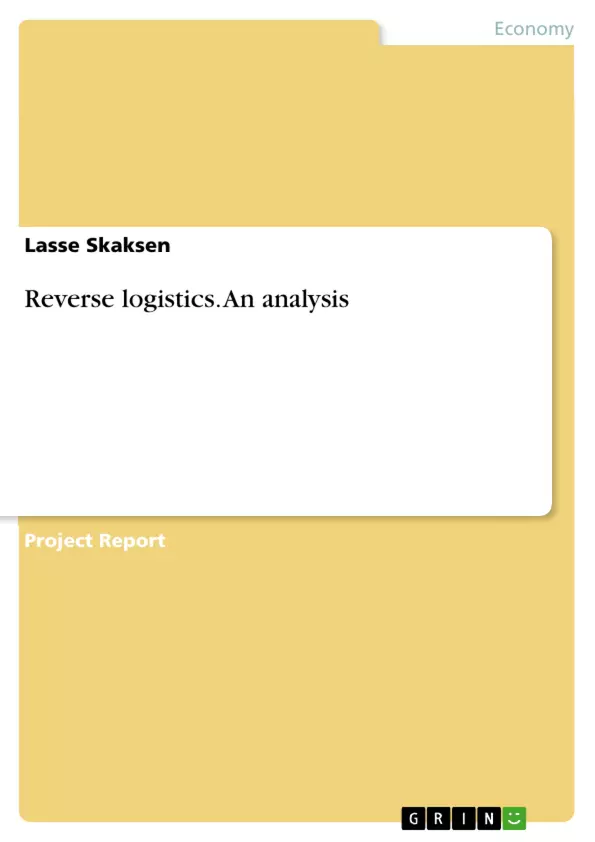This research report will describe, analyse and evaluate an increasingly relevant topic within global business logics, namely Reverse Logistics. Two main external drivers as well as the major internal motives to establish a Reverse Logistics network will be identified and examined.
The following definition of Reverse Logistics by Hawks will be utilized in this report: “the process of planning, implementing, and controlling the efficient, cost effective flow of raw materials, in-process inventory, finished goods and related information from the point of consumption to the point of origin for the purpose of recapturing value or proper disposal” ("reference", 2006).
Inhaltsverzeichnis (Table of Contents)
- 1.0 Introduction
- 2.0 External drivers of Reverse Logistics
- 2.1 Legislation
- 2.2 CSR - Stakeholder expectations and requirements
- 3.0 Internal motives to establish a Reverse Logistics network
- 4.0 Forward logistics vs. Reverse Logistics
- 4.1 Differences
- 4.2 Cost differences
- 5.0 Management challenges
- 6.0 Conclusion
Zielsetzung und Themenschwerpunkte (Objectives and Key Themes)
This research report analyzes the importance of Reverse Logistics within global business logistics. It explores both external and internal drivers that contribute to the establishment of a Reverse Logistics network. The report examines the differences and cost discrepancies between forward and reverse logistics, and identifies managerial challenges that arise in a future with Reverse Logistics as a vital part of the supply chain.- External drivers of Reverse Logistics, including legislation and Corporate Social Responsibility (CSR).
- Internal motives for establishing a Reverse Logistics network, such as competitive advantage and cost reduction.
- The differences and cost implications between forward and reverse logistics.
- Management challenges associated with Reverse Logistics.
- The importance of Reverse Logistics in creating sustainable business practices and addressing environmental concerns.
Zusammenfassung der Kapitel (Chapter Summaries)
- Introduction: This chapter defines Reverse Logistics and emphasizes its growing relevance in the context of global business logistics. It highlights the financial benefits of efficient Reverse Logistics networks and provides a visual representation of the network structure.
- External drivers of Reverse Logistics: This chapter focuses on legislation and CSR as key external factors driving the implementation of Reverse Logistics. It discusses how regulations like the WEEE directive influence the development of Reverse Logistics networks and how stakeholder expectations regarding environmental responsibility are prompting firms to adopt sustainable practices.
- Internal motives to establish a Reverse Logistics network: This chapter delves into the internal motives for firms to create Reverse Logistics networks, such as gaining a competitive advantage, improving customer relationships, reducing costs, and enhancing resource efficiency. It presents a table summarizing the internal motives identified by Rogers and Tibben-Lembke.
- Forward logistics vs. Reverse Logistics: This chapter compares forward logistics with reverse logistics, highlighting the unique challenges that reverse logistics presents for managers. It explores the cost differences between the two systems and emphasizes the need for effective management strategies.
Schlüsselwörter (Keywords)
Reverse Logistics, global business logistics, external drivers, internal motives, legislation, CSR, competitive advantage, cost reduction, management challenges, sustainable business practices, environmental concerns.- Quote paper
- Lasse Skaksen (Author), 2011, Reverse logistics. An analysis, Munich, GRIN Verlag, https://www.hausarbeiten.de/document/232612


